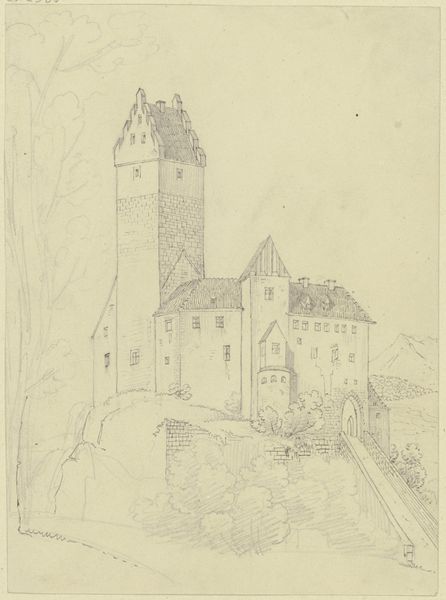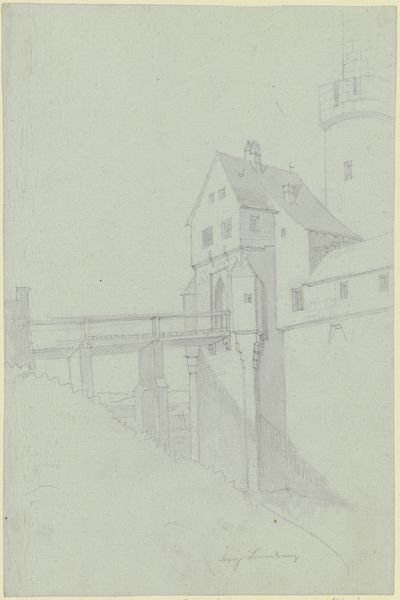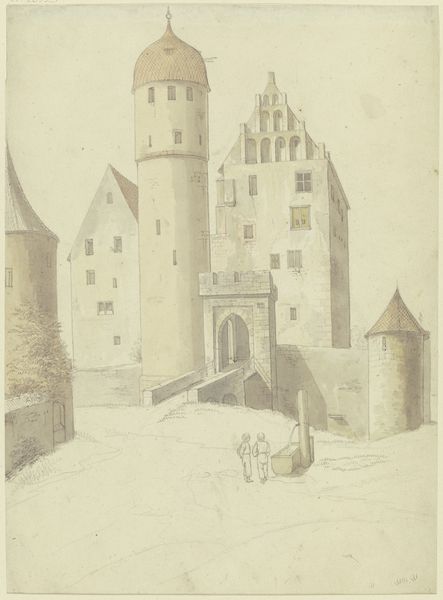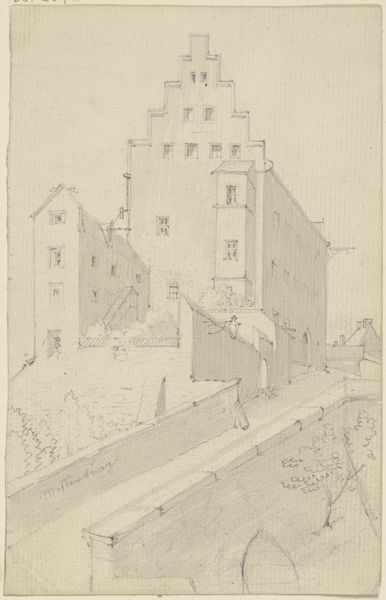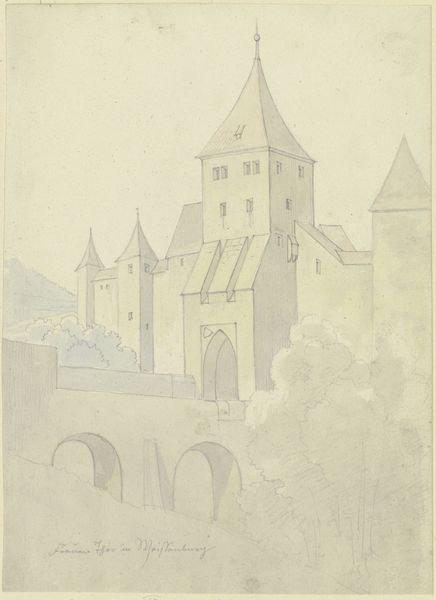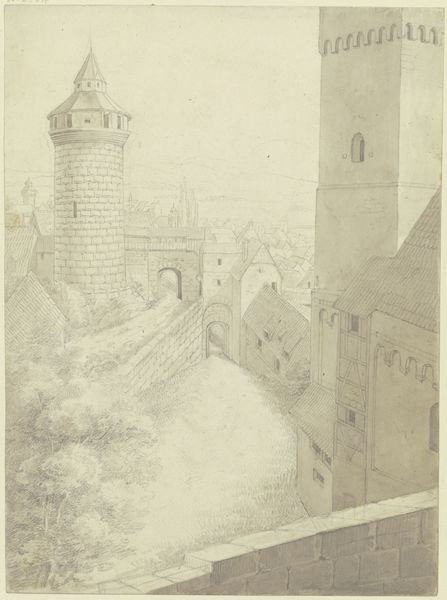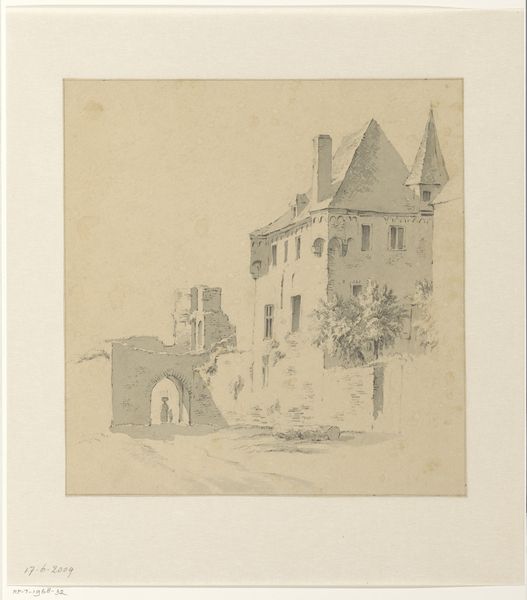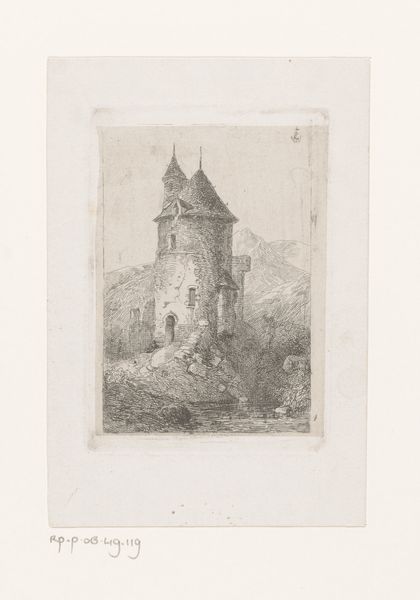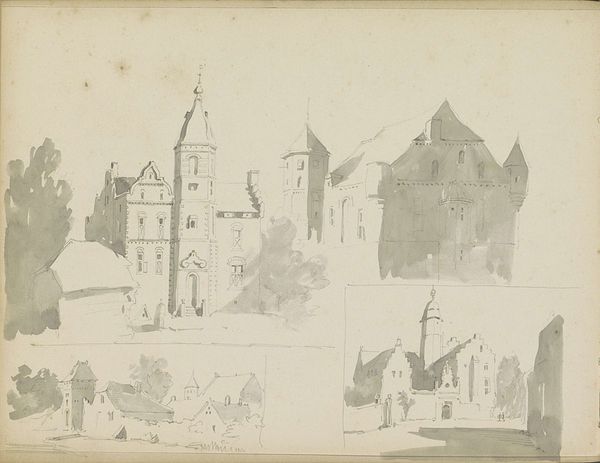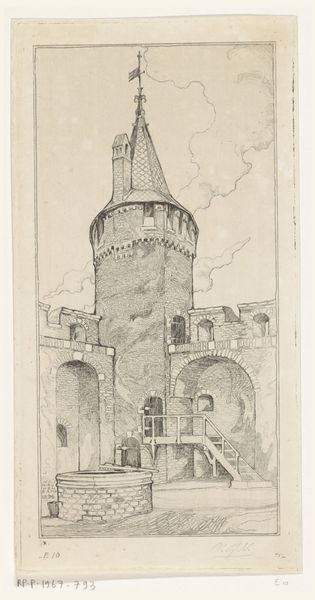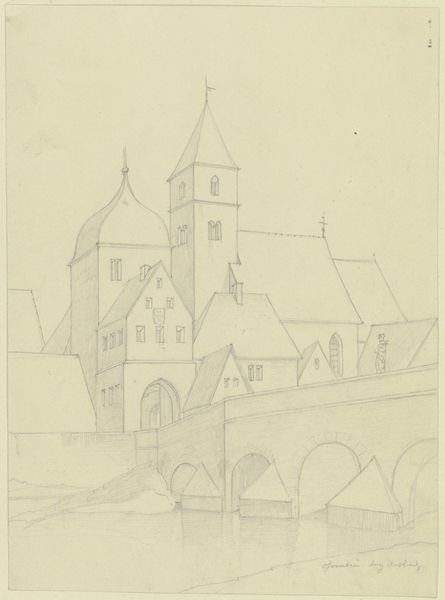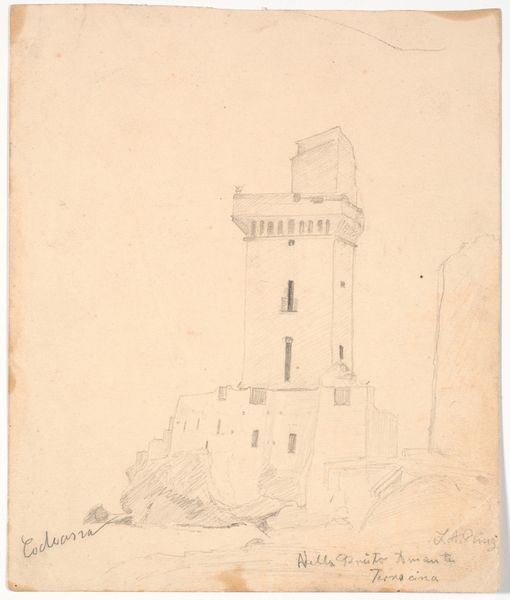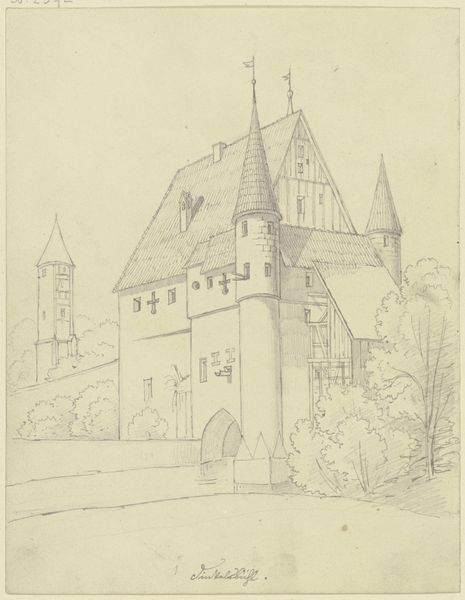
drawing, pencil, architecture
#
drawing
#
16_19th-century
#
landscape
#
romanticism
#
pencil
#
architecture
#
realism
Copyright: Public Domain
Curator: Today, we are observing Karl Ballenberger’s pencil drawing of “Burg Katzenstein bei Frickingen” exhibited here at the Städel Museum. Editor: My first impression is that of stark, subdued monumentality. The limited tonal range gives it a somewhat melancholic feel, as if the scene is fading into memory. Curator: Indeed. Ballenberger was working within the emerging romanticism style of the early 19th century. His landscape emphasizes feeling over pure representation and reveals something of the shifting relationship with architectural heritage, as medieval castles came increasingly under pressure during widespread transformations to agriculture and industry. Editor: Note the geometric structure—how the angularity of the rocks below sharply contrasts with the softer lines of the buildings around. Also, notice how he leads your eye with faint lines. Curator: The composition skillfully juxtaposes the imposing castle structure with the surrounding natural landscape. He's not merely documenting a landmark; he's embedding it within a narrative of place and time. What also becomes evident here is the growth of tourism; picturesque images like this became popular as souvenirs, feeding back into interest around these heritage sites. Editor: Looking at the facade of the central tower and its meticulous linework, one has to marvel at the craftsmanship and precision applied within a rather understated drawing. Even with minimal shading, the solid volume feels imposing, dominating the site with almost brutal verticality. Curator: Absolutely. These Romantic depictions are laden with political connotations as German identity, specifically linked to such cultural heritage sites, developed to forge connections through shared culture during this period. Artists and writers amplified these ideas through publications about national antiquities, with images like this serving as evocative visual documentation. Editor: From a purely compositional point of view, Ballenberger makes remarkable use of line and perspective to lead the viewer through various planes into this image, rewarding viewers with prolonged observations, like an actual architectural site! Curator: That's precisely what's intriguing here. It functions both as art and artifact. Editor: I now leave with renewed respect for pencil work! Curator: A great example of an artist shaping national perceptions through place.
Comments
No comments
Be the first to comment and join the conversation on the ultimate creative platform.
